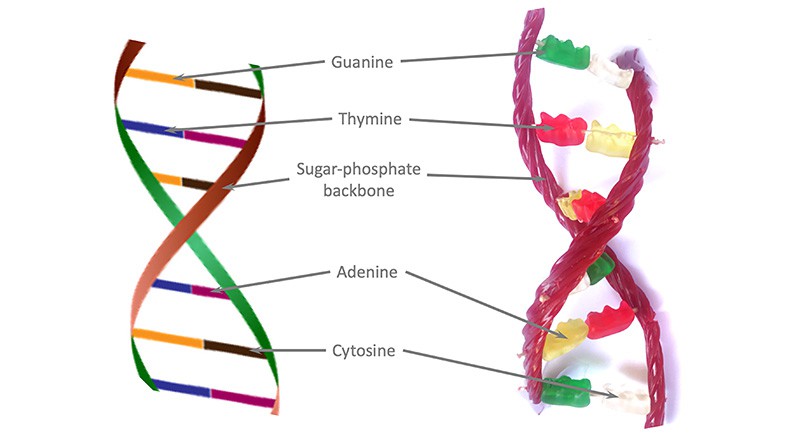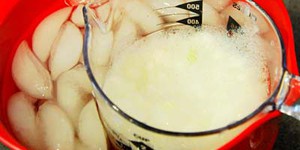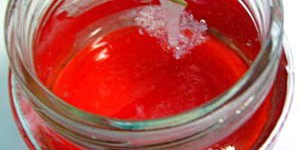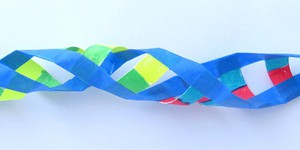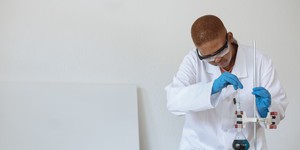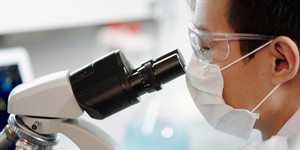Summary
Introduction
Ever wondered how DNA, the genetic blueprint of a life-form, can encode and pass on the information on how to grow and maintain that life-form? Just like a cookbook contains a complete recipe for a dish, DNA stores the recipe for the life of an organism. Although each human has a unique DNA sequence, the DNA in all of us is about 99.9% identical! In this activity, you will use pieces of candy to make a model for a short section of DNA—enough to get a sense of what DNA is like and how it encodes life.
Materials
- Soft candy that comes in four different colors such as gummy bears, gum drops, or mini marshmallows (10 of each color)
- Twizzlers (2) (or similar rope-like candy)
- Toothpicks (5)
- Paper
- Pen (or marker)
- Paper towel
-
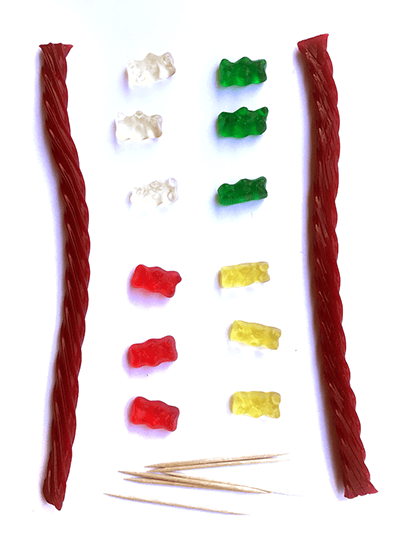 Image Credit: Svenja Lohner / Science Buddies
Image Credit: Svenja Lohner / Science Buddies
Prep Work
- Clean the area you will work on, or plan to work with your candies on top of a paper towel.
- Sort your candies by color. Make sure you have at least 10 pieces of each of the 4 colors you will be using.
Instructions
- DNA encodes the genetic blueprint of a life form using four chemicals. It is a long molecule that looks a little like a rope ladder, only about 200,000,000 times smaller! Give the long "ladder" a clockwise twist, and you can see why DNA is also called the "double helix." Following the instructions below, you will make a candy model of a piece of DNA. This will help you see what DNA looks like!
- DNA uses four chemicals (adenine, guanine, thymine and cytosine) to encode the data to maintain and grow an organism. These chemicals are abbreviated by the letters A, T, C, and G. We will use different colors of candy to represent each of these chemicals: yellow (A), red (T), green (G), and clear (G). You might use different colors. That's okay! Just be sure that you keep track of which color you are using to represent each chemical. (Tip! Take a piece of paper and label each of your piles with the letter of the chemical it represents.)
- These code chemicals are very particular. They always pair up in specific ways: A pairs with T, and C pairs with G. In your model, red only combines with yellow, and clear only combines with green. Use toothpicks to make colored pairs from your candies by sticking a candy on each end of the toothpick. Push the candies onto the toothpick so that the candies are pressed together in the middle, and you still have a bit of toothpick sticking out on each side, as shown below. You will create 6 pairs each of yellow-red and green-clear. No other combinations of colors are allowed. Note that in your body, these pairs are tiny and not colorful! Your candy model makes them look large and colorful. That makes the model easier to understand. Your DNA has a length of about 3 billion pairs, so your candy DNA will only model a small piece of DNA—not the whole sequence!
 Image Credit: Svenja Lohner / Science Buddies
Image Credit: Svenja Lohner / Science Buddies
- DNA looks like a twisted rope ladder. In your model, you will use Twizzlers for the "backbone" sides of the ladder and then add the candy "pair" rungs. To assemble your DNA model, lay two Twizzlers parallel to one another with about 8 cm of space in between.
- You will link the pairs of code chemicals to your DNA backbones by attaching each pair to the backbones so that the pair look like ladder rungs. Lay your pairs between the backbones, as shown below. (The order and orientation you choose, or the sequence is up to you.)
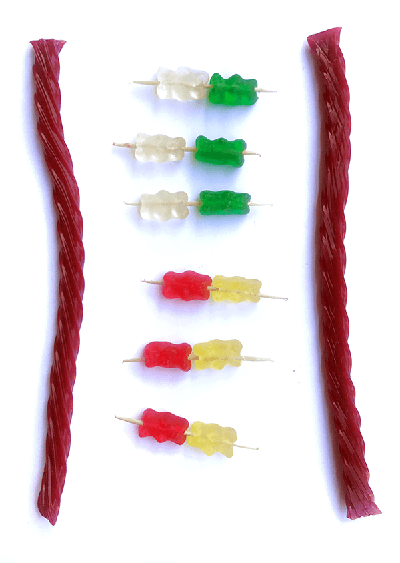 Image Credit: Svenja Lohner / Science Buddies
Image Credit: Svenja Lohner / Science Buddies
- Take one toothpick that has a GC or AT pair of candies on it and stick the toothpick into the inside of one piece of the backbone (near the top). Then carefully stick the other end of the toothpick into the other side of the backbone so that your candy pair is connected to both sides.
- Continue to attach your other candy pairs to the backbones so they make parallel rungs. Leave about one or two centimeter of space between each rung. Do this until your backbones are connected by pairs from one end to the other.
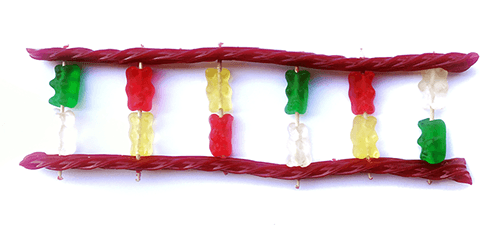 Image Credit: Svenja Lohner / Science Buddies
Image Credit: Svenja Lohner / Science Buddies
- Your candy DNA model probably looks something like the one below. Your sequence of pairs might be in a different order than this. That is okay! Lay your model on a piece of paper, and use a pen or marker to write the letters next to each piece of candy.
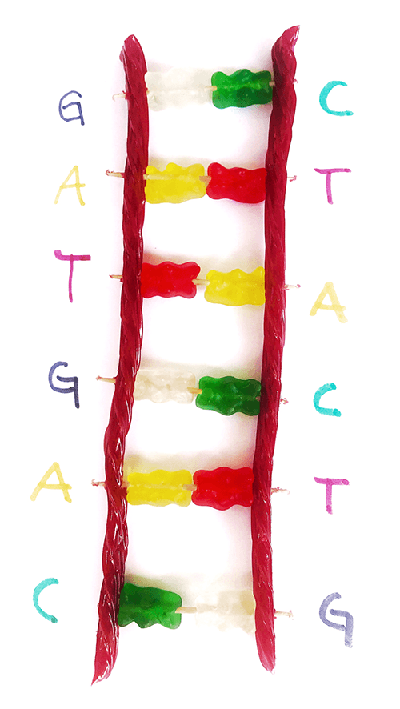 Image Credit: Svenja Lohner / Science Buddies
Image Credit: Svenja Lohner / Science Buddies
- Your model is almost finished! One detail is missing: DNA is twisted. Hold one end of your model flat and carefully flip the other end over (180 degrees). This should create a twist!What happens to the length of your DNA piece when you twist it? Do you see why DNA is called a double helix?
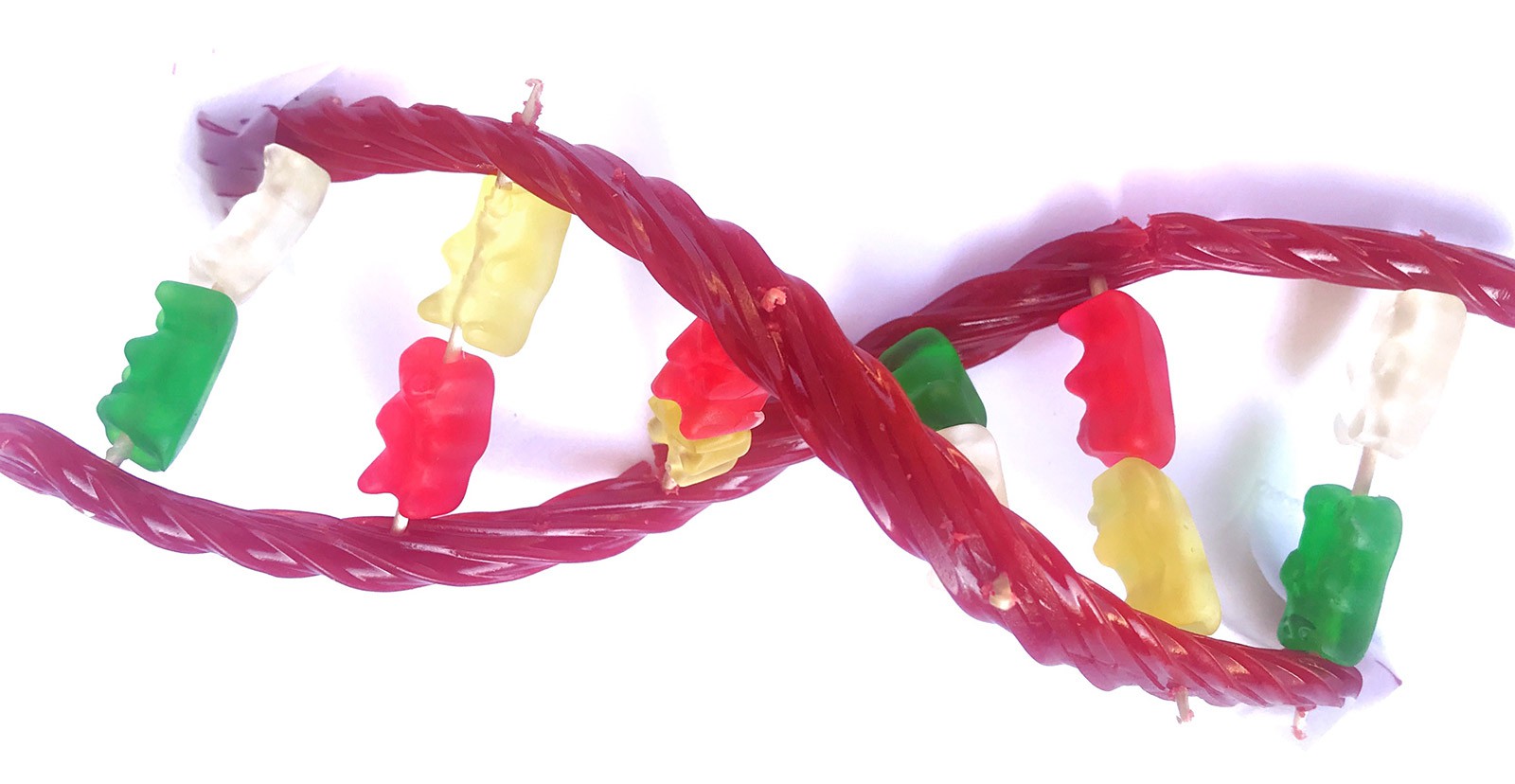 Image Credit: Svenja Lohner / Science Buddies
Image Credit: Svenja Lohner / Science Buddies
- DNA can duplicate itself using the information contained in either strand, and you can too. To test, untwist your DNA model and lay it flat on a table or the ground. Hide one strand (a backbone with one side of each pair) with paper or a blanket. Your job is to use the knowledge you gained while making the DNA model to complete the section.For each visible color (code chemical), can you tell which color (code chemical) is hidden? (Hint: look back at the second step of the procedure for help.) How could this help you duplicate your DNA molecule?
- To get an idea of how long human DNA is, count the number of pairs in your DNA section. Human DNA consists of three billion pairs.Can you estimate how long your model would be if you modeled all the three billion pairs?
- Take your ruler and measure how wide your DNA molecule is when untwisted. A real DNA molecule is about two nanometers or two millionths of a millimeter (2÷1,000,000 mm) wide.How many times wider is your model than a real DNA molecule?
What Happened?
You were most likely able to tell what the hidden colors were, no matter which strand you chose to hide. This is because once you know one side of a pair, you know its partner as these chemicals always pair with the same partner: red with yellow; green with clear.
You probably have about 6 pairs in your model. You would need to make it 500,000,000 times longer to model all three billion pairs of human DNA. Your model would be about 60,000 km (37,000 miles) long, which is about 1.5 times around the world!
Your DNA molecule is probably about 8 cm wide. Real DNA is about 2 nanometers or 2 millionths of a millimeter wide. This means your model is about 40 million times wider than real DNA.
This long string of DNA is coiled and folded into the center of almost every cell of the human body!
Digging Deeper
Plants, fungi, and humans might seem very different from each other, but they are all made up of tiny building blocks called cells, and—with very few exceptions—each of these cells has in its center a molecule containing the blueprint of the organism. This molecule is called DNA: deoxyribonucleic acid. Although the blueprint is different—after all, plants, fungi, and humans are very different organisms—the way it is encoded in DNA is identical.
The DNA molecule encodes all information using four chemicals: Cytosine [C], Guanine [G], Adenine [A], and Thymine [T]. It has two complementary strands, each with a long sugar-phosphate backbone to which the four chemicals attach. The sequence or order of these chemicals contains the data to maintain and grow the organism. In DNA, these four chemicals always link together to form pairs: A pairs with T and C pairs with G. In this very specific way, the two complementary strands link together to form DNA: a long molecule that looks a little like a rope ladder, only about 200,000,000 times smaller and twisted.
When organisms grow, their cells divide and in almost all cases, each cell receives a duplicate of the DNA molecule. DNA's ingenious structure allows for easy replication: each strand of the double helix contains all the information needed to create a new DNA molecule. If the pairs let go of each other, each backbone with its sequence of four chemicals can be the basis of a new DNA molecule. As A and T always pair up and C and G also always go together, one strand is enough to recreate the molecule.
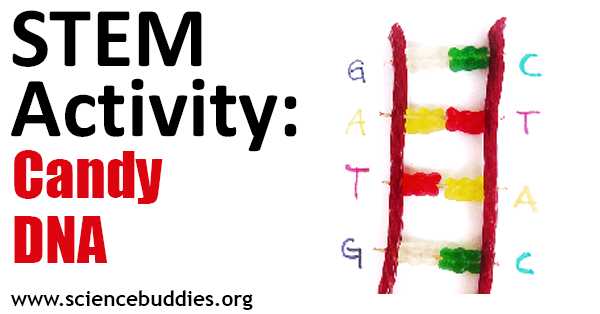 Image Credit: Science Buddies
Image Credit: Science Buddies
Ask an Expert
For Further Exploration
- This model is made from candies. Can you create a model from paper and tape?
- Take a piece of rope about one meter long. Twist the rope and keep on twisting. Do you see how a long string can twist and fold into a much more compact space? In a similar way, the DNA molecule twists and folds into a more compact entity.
Related Resources
Project Ideas
Activities
Links
- Blog Post: Celebrating DNA and the History of the Double Helix
- Blog Post: DNA-Based Crime Prevention
- Scientific American: Identical Twins' Genes Are Not Identical
- Genome News Network: What's a Genome


